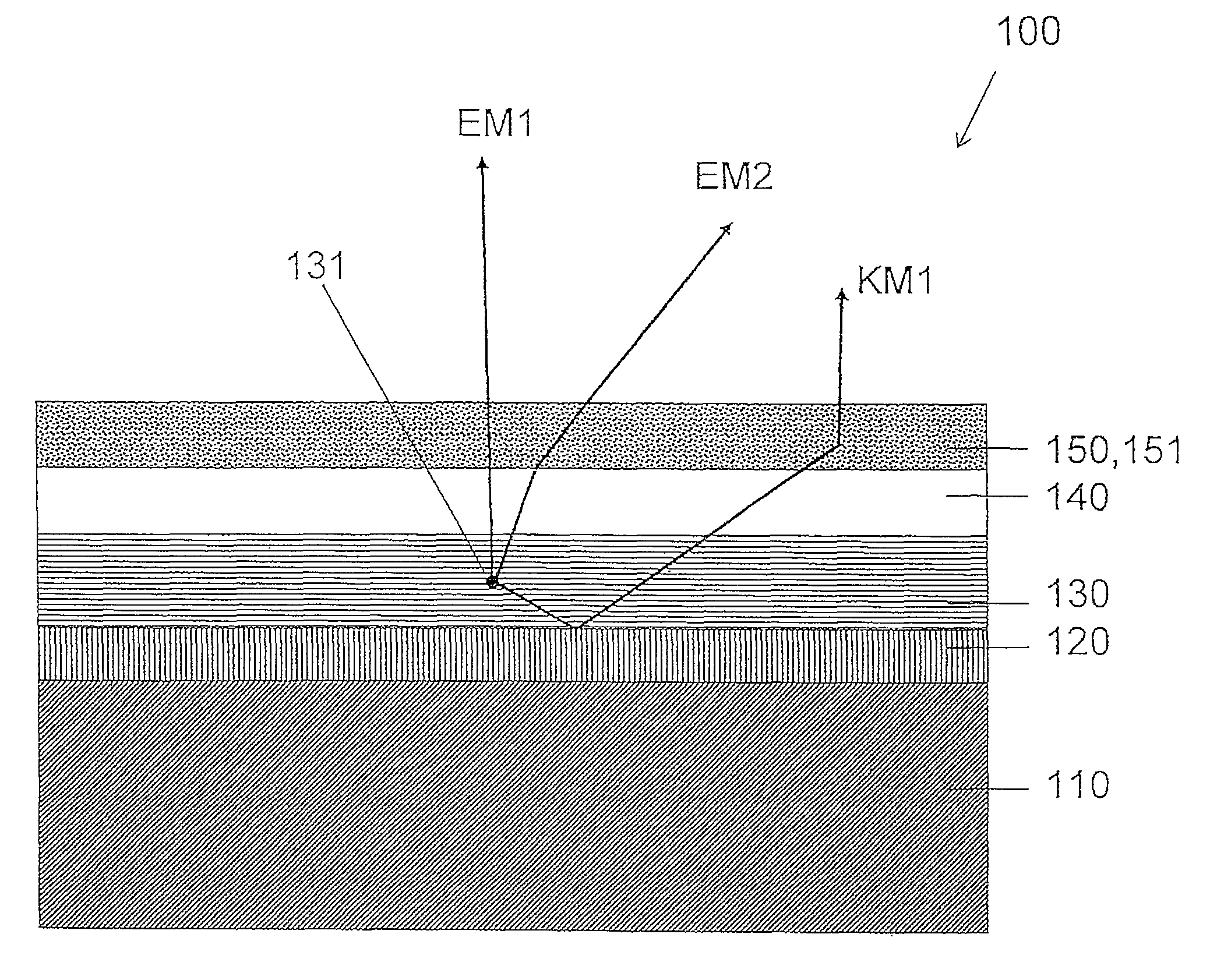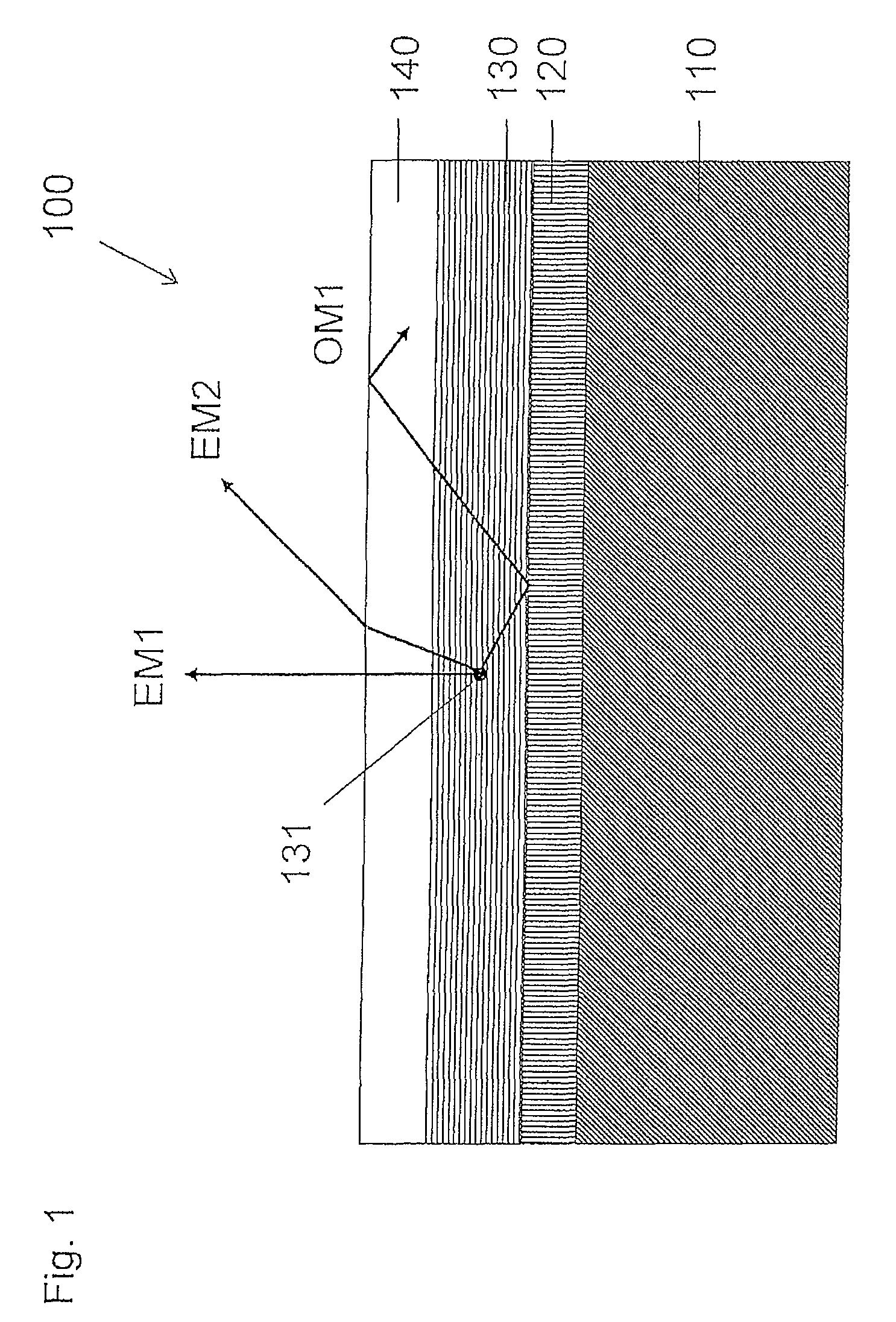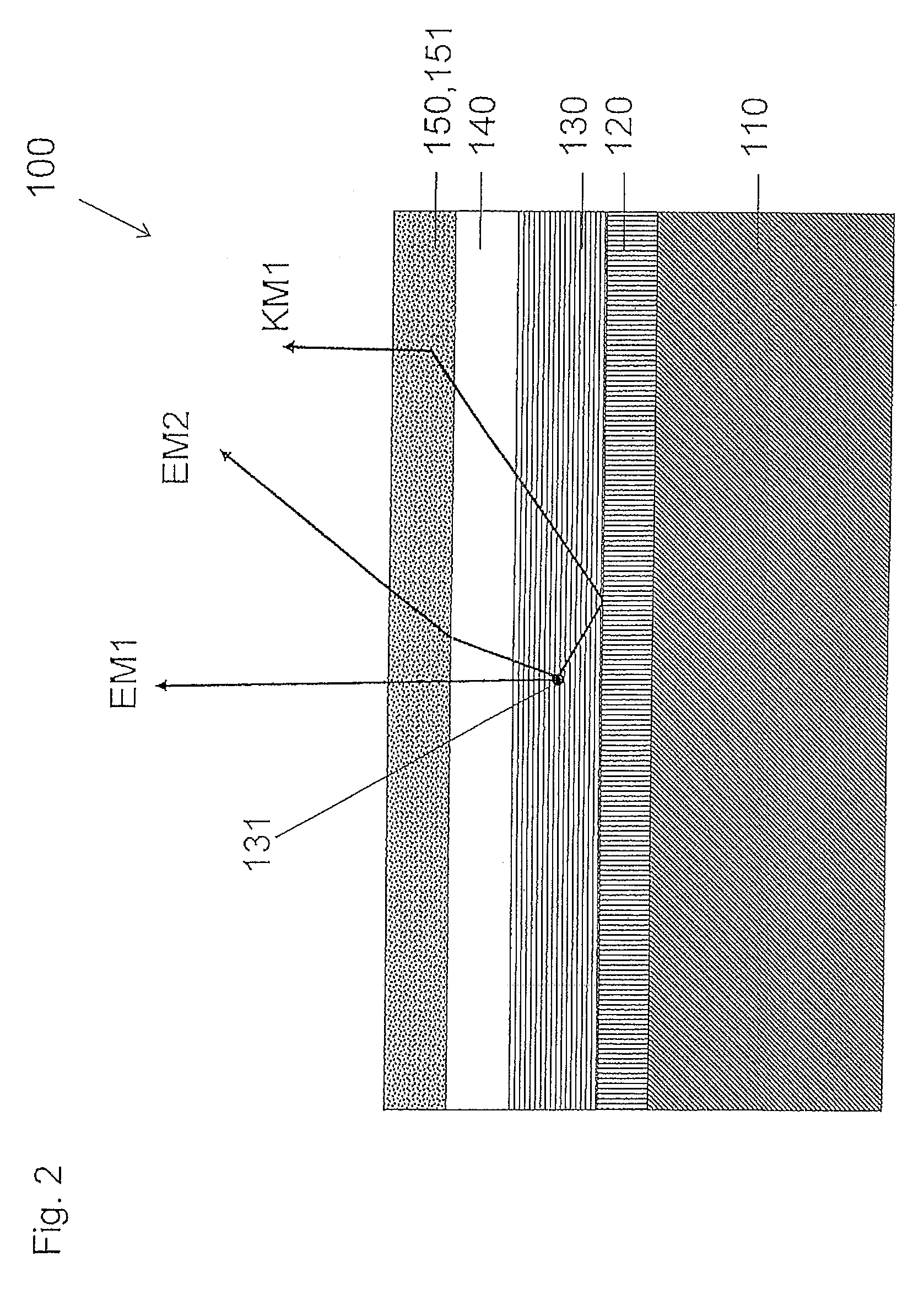Top emitting, electroluminescent component with frequency conversion centres
a technology of electroluminescent components and top emitting, which is applied in the direction of discharge tube/lamp details, discharge tube luminescnet screens, organic semiconductor devices, etc., can solve the problems of low efficiency, low coupling efficiency, and low coupling efficiency, so as to improve coupling efficiency
- Summary
- Abstract
- Description
- Claims
- Application Information
AI Technical Summary
Benefits of technology
Problems solved by technology
Method used
Image
Examples
Embodiment Construction
[0057]The invention is explained below by the description of a plurality of embodiments with reference to the accompanying Fig., in which
[0058]FIG. 1 shows a conventional top emitting OLED in a schematic illustration,
[0059]FIG. 2 shows a top emitting OLED designed according to the invention in accordance with a first embodiment in a schematic illustration.
[0060]FIG. 1 shows a schematic sketch of the construction of a conventional electroluminescent, top emitting component 100. In the example specified, the electrode 120 nearest to the substrate 110, which electrode is designated hereinafter as first electrode, is embodied as a reflective metal layer. A plurality of organic layers, specified as organic layer structure 130 in the Fig., are applied to the first electrode. Said layer structure comprises at least one organic electroluminescent layer. The layer structure 130 is adjoined by a second electrode 140 composed of a transparent material, for example a conductive oxide.
[0061]When...
PUM
 Login to View More
Login to View More Abstract
Description
Claims
Application Information
 Login to View More
Login to View More - R&D
- Intellectual Property
- Life Sciences
- Materials
- Tech Scout
- Unparalleled Data Quality
- Higher Quality Content
- 60% Fewer Hallucinations
Browse by: Latest US Patents, China's latest patents, Technical Efficacy Thesaurus, Application Domain, Technology Topic, Popular Technical Reports.
© 2025 PatSnap. All rights reserved.Legal|Privacy policy|Modern Slavery Act Transparency Statement|Sitemap|About US| Contact US: help@patsnap.com



